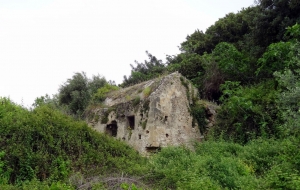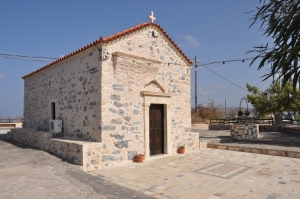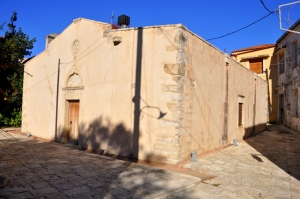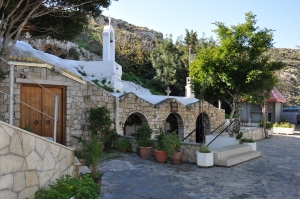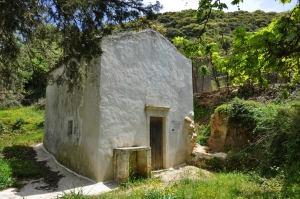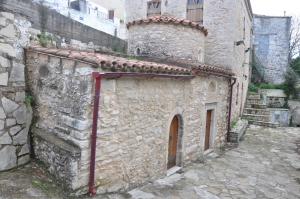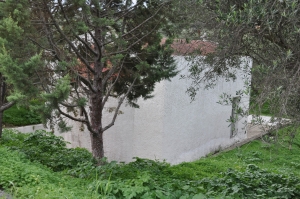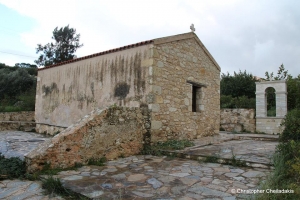Here we meet the ruins of Panagia nunnery at position Karydaki. It was a two-aisled church with a transverse narthex. From a spring next to this monastery, the famous Morosini fountain in Candia (now Heraklion’s Morosini fountain at Lions square) was watered after running through a giant aqueduct system of that era.
Atop Aorakia hill we meet the Church of All Saints. It was built in the Venetian Era (before 1669) and bears traces of frescoes.
The church of St George is a three aisled basilica with a raised middle aisle. Its foundation dates back from the 13th to 14th century and is the largest frescoed church of Archanes. During the last renovation (18th-19th century) the gradients of the roof were decreased and altered its form.
Next to the beach of Florida, Karteros bay, we meet the cavernous chapel of St. John the Baptist (celebr. August 29) and Saint Nikon the Metanoite (Repent) (celebr. November 26). There are impressive modem frescoes by the Saints of Crete, drawn by Takis Moshos from Monembasia.
The very old church of Michael the Archangel is located south of Archanes, bearing frescoes of 1315. A mural depicts the founder of the church holding a model of the church and there are depictions of sinners in hell.
The Byzantine church of Agia Paraskevi at village Siva is a small single-nave church with a dome. Remarkable are the frescoes dating from the early 14th century, and there are parts of wall paintings of older periods.
In the middle of the road that connects Kallithea to Knossos, we meet the deserted hamlet of Sellopoulo, on the bank of Keratos river, known to archaeologists due to the domed tomb found here. Below and next to the road we see the single-aisled church of Agia Paraskevi, bearing damaged frescoes dating from the Venetian era.
Kyra Eleousa is located amidst of a green and fertile slope. The temple courtyard hosts a well with spring water that never dries up. According to tradition Kyra Eleousa Spilia served as a small monastery till the Ottoman Era. It is true that in the last years of the Venetian era, the suburbs of Heraklion (Candia) on the so-called area of Parakandia housed about 40 active monasteries.











